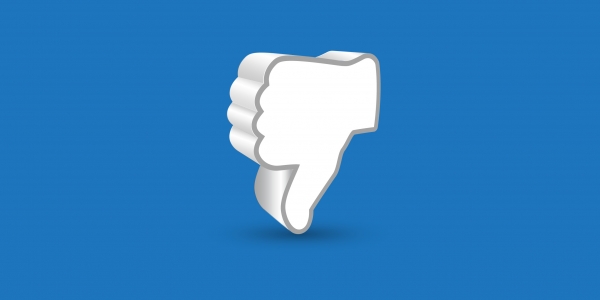Facebook dislike button: What’s not to like?

Having been widely rumoured for what seems like an eternity, Facebook finally appears to be ready to unveil its ominous Dislike button.
Co-founder Mark Zuckerberg said the idea behind it is to give users the ability to express empathy as “not every moment is a good moment” and a ‘like’ doesn’t always portray a user’s true thoughts and feelings about a particular post.
I can see where Zuckerberg is coming from on this matter. On many occasions I have refrained from Liking a post by a friend or Page for fear of it looking insensitive and to avoid any possible awkwardness. For example, a post informing people of an illness or someone’s passing.
A Dislike button could legitimately serve as a better way for friends/fans to subtly convey a more genuine and heartfelt emotion on the matter. Rather than liking the fact that a friends’ relative has died, for example, clicking Dislike would convey a message of “I don’t like this news” or “this news saddens me”. I, personally, would feel more comfortable posting such an update if friends had the option of clicking Dislike rather than just Like. It gives others the opportunity to give a more sympathetic and appropriate response.
It’s not just individual users who could benefit from such a feature. It’s widely-held that creating customer relationships built on empathy sustains a sense of loyalty and, ultimately, boosts profitability. A brand’s ability to respond to this new option for consumers to convey their emotions will create a noticeable rift between those names that demonstrably understand their customers’ emotional needs and those that don’t. Brands that can demonstrate an understanding of their customers’ emotions and needs could really benefit in a Dislike button world.
This is, however, simply theoretical. The reality has the potential to be markedly different. It is almost certainly the case that users will utilise the new feature to convey a negative emotion of some sort be it disapproval, dissatisfaction or even frustration and anger. This, potentially, has serious implications for both users and brands alike.
Users could start to feel discriminated against or bullied if they start seeing many people Disliking their posts. I think I’d rather my friends skip by my posts and choose not to interact if they don’t approve/agree with them, rather than subtly convey their feelings through the Dislike button. The phrase “ignorance is bliss” springs to mind here.
Such a feature has the potential to be the most harmful among Facebook’s younger users. The advent of social media has meant that bullying is no longer restricted to the playground. We have all seen many reports of children being bullied on social media, with cases of self-harm and some victims even taking their own lives. A Dislike button could provide even more ammunition to those cowardly cyber-bullies.
When it comes to users’ interactions with brands on Facebook, the introduction of a Dislike button could be a new source of headache for brands who are viewed by users/customers as delivering a service which isn’t up to scratch. Not content with simply commenting on their dissatisfaction, disgruntled users could well set about Disliking everything the brand posts on Facebook as part of a one-man (or woman) protest.
Such a scenario does, however, offer a key opportunity for brands to improve the service they provide their customers. The Dislike button could provide an additional way to gleam insights directly from customers. If a brand sees large numbers of Dislikes on a particular post, they can then look at the comments and see what customers are saying which may give some insight into why the post has attracted so many dislikes. This can then be translated into demonstrable empathy on both an individual and aggregate level – the brand can respond directly to its customers, improving their experience.
Of course, this is all mere speculation about something that’s not guaranteed to be implemented, at least not in the form we may be expecting, anyway. Some reports also suggest that this feature may be optional just for brand pages while others say that it may not appear on brand pages at all and may be restricted solely to personal profiles.
Whatever happens and in whatever form it appears, the “Dislike” feature is sure to be a big talking point (as if it isn’t already!) and its utilisation over time will be a hot topic for both individual users and marketers/brands alike.
Let me know your thoughts on the impending “Dislike” feature. How do you think it will affect individual users, brands and even Facebook as a platform?
